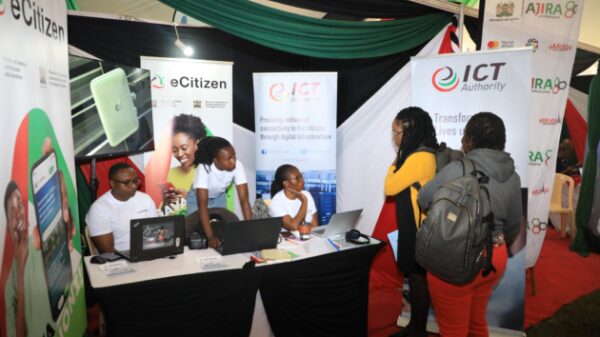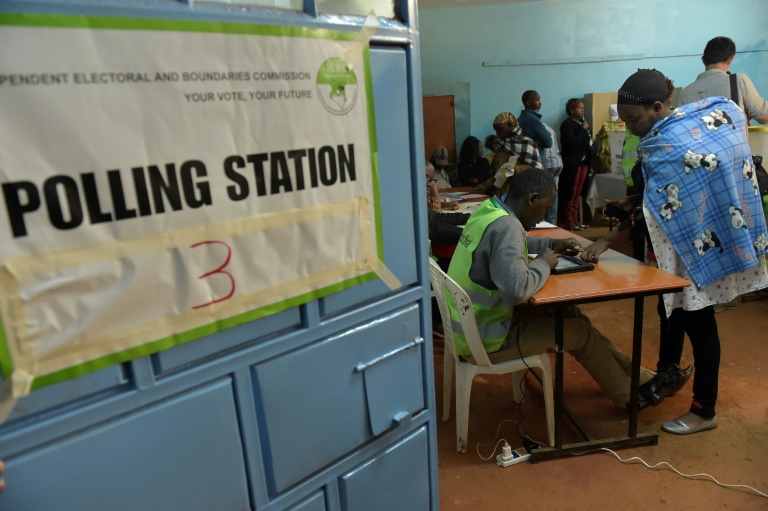The COVID-19 pandemic has disrupted many economic sectors and allowed a number of them to accelerate their hitherto slow adoption of information technology systems for efficient service delivery.
One of the showcase emerging sectors remains the education industry. This sector is now thriving with the adoption and use of Information and Communication Technologies (ICTs) in education systems, popularly known as “EdTech”.
Global bodies such as the World Bank Group have stepped up engagements and support to help countries leverage EdTech investments to develop resilient hybrid learning systems.
Locally, due to pressures occasioned by the COVID-19 pandemic, it is increasingly evident that the traditional instructional methods, modes of knowledge production and consumption, and institutional conceits of exclusivity are no longer tenable if education institutions are to remain relevant for Africa’s regeneration.
The emerging ecosystem of challenges and opportunities requires African and Kenyan education institutions to embrace EdTech strategies.
Lifelong learning in which learning occurs at our convenience (wherever we are, at whatever time, via a variety of delivery platforms) is increasingly gaining a foothold globally due to the dynamics of 21st century skill sets that the job market demands As a result, any considerations in EdTech must support ICT solutions that enhance support for 24/7 learning beyond traditional geographic, physical boundaries and demographics, just as a modern business is increasingly turning to technology to operate on the cutting edge 24/7. EdTech proponents agree that technology played and continues to play an essential role to deliver education to students outside of school.
Guided by my personal experience while implementing ICT solutions and charting the technology policy for United States International University-Africa (USIU-Africa) with my dependable colleagues, I recently reflected on the key ingredients that make for a solid technology in education (EdTech) foundation.
Firstly, education institutions must focus their energies on the governance and staffing structure of the ICT function. Due to the increasingly centralized nature of ICT as the nerve center of an institution’s day-to-day learning and administrative operations, there is a need for a staffing structure that places the head of ICT operations at the highest possible level of the organization structure. ICT integrations and operations are a management function and cannot be in peripheral management positions. Organic development of appropriate controls, policies and Standard Operating Procedures (SOPs) is another continuous activity for which the Head of ICT would bear responsibility. Decision-making on ICT adoption models, e.g., developing ICT solutions in-house, outsourcing development or buying off-the-shelf solutions, hosting in-house or hosting in the cloud, will largely depend on an institution’s leadership’s vision and mission.
Secondly, technology adoption must be regarded as a change management lever. A learning institution must be conscious of the negative impact changes in technology and or software can have on learning, teaching, and the institution’s operations if these changes are not adequately communicated to all constituents. The latest research in this area proposes a socio-technical approach that adopts co-design, incorporating the users at every stage in the design and development of ICT solutions since a system is only as good as the team that develops it. The more inclusive the team is, the higher the chances of the system impacting the institution’s operations; positively.
Invariably, an institution’s strategic plan, financial resources, and focus will guide the selection of what tools senior management prioritizes; hence, this article outlines some critical ICT solutions that higher education institutions may consider deploying to offer 21st-century education that supports teaching, learning and administration.
Enablers such as power supply, reliable internet access and redundancy platforms should be carefully considered. Due to the unreliable nature of connectivity in most parts of the African continent, there is need to deploy a couple of internet links which in our local context, Kenya Education Network (KENET), Kenya’s National Research and Education Network (NREN) provides at highly subsidized rates. There is also need for redundant power (from the primary grid and backup from a generator) with some form of load balancing that encompasses failover capability.
Closely linked to access is the need for technical help desk tools that handle queries and guide users. Education institutions would need an ICT call center (Helpdesk) responsible for resolving technical issues that users raise.
Due to increasing cybersecurity risks that automation exposes organizations to, storage, backup and remote services are also crucial factors. The operationalization of robust Disaster Recovery (DR) measures at three levels (on-site, at a remote location e.g. on the cloud and via tapes kept in a vault) as part of the organization’s Business Continuity Plan (BCP) should to support data restoration in case services fail.
Educational institutions need to ensure continuous effort is made to maintain and upgrade their core ICT infrastructure. This ought to be guided by a 3 to 5-year ICT strategy that builds into the overall institutional strategic plan. Within the operational framework, periodic maintenance and upgrading of technologies is also vital.
Integrating a robust Learning Management System (LMS) is a necessary requirement. Whether it is deployed to complement learning in a face-to-face mode on one end of the spectrum or a core part of an institution’s online pedagogy, an LMS is essentially a virtual learning environment that is used in the delivery of educational content to learners and paperless assessment through a variety of technological functions which are connected to the Internet. There are several options here, some of which may be open source.
To further boost remote productivity, videoconferencing and proctoring tools are now a must-have ingredient. Institutions must invest in videoconferencing platforms which support synchronous learning. Among the activities that a comprehensive videoconferencing tool provides support for include scheduling study groups, class sessions, remotely locating students, recording lectures, co-teaching, connecting laboratory environments to lecture halls, and facilitating various modes of pedagogy such as online, blended, hybrid and hybrid-flexible (hyflex). Proctoring tools work alongside video conferencing tools in a live proctoring environment or on their own if they have Artificial Intelligence (AI) capabilities to flag suspicious behavior.
The integration of a Student Information System (SIS) helps to elevate the student management process to a higher level. An SIS acts as the learning institution’s Enterprise Resource Planning (ERP) system; holds and processes data that relates to every student’s learning journey at an institution. A SIS is a learning institution’s solution for missing marks management and the institution could select some options each with their positives and potential pitfalls.
From a management perspective, integrating a Business Intelligence (BI) tool is also recommended. These BI tools provide real-time Business Intelligence analytics, interaction and content usage to users at various levels, including teaching faculty, departmental heads and senior management for data-driven decision-making to aid student learning. The institution may also need to invest in third-party software integrated into the LMS to monitor interaction and activities on the platform.
Last but not least, Learning Technology Interoperability (LTI) tools also come in handy as the platforms above must not exist in isolation. LTI applications and tools make sharing data between an organization’s LMS, SIS, payment services, and other services such as the library; simple, eliminating the need for manual processes. Apart from the negative impacts on efficiency that disparate pieces of data occasion in an institution, data held in various systems inevitably leads to compromises in integrity.
Other useful ICT tools for academic delivery include library systems that are accessible from remote locations securely using Virtual Private Network (VPN) platforms, an e-Repository that hosts the institution’s academic artefacts, operational workflow systems (e.g. clearance, grade change, procurement etc.), Electronic Data Management Systems (EDMS) that host the institution’s anti-plagiarism platforms and tools that support inclusivity for differently-abled persons.
According to the World Bank Group, education at its heart is about human connections and relationships. While we can never replace the magic that happens between great teachers and students in an in-person environment, there is a glaring need for us to focus on the social aspects of technology that enhance connections from a distance and to an audience each of whom has their unique personal circumstances and learning preferences. Much more attention must be directed on how technology will enhance teaching and learning in a learning environment that has the nimbleness and flexibility to enable faculty reach out to students from the widest possible demographic, both in son campus and at home.
Suffice it to say that EdTech solutions are now a vital enabler of successful education outcomes.
Paul Okanda is the Director, ICT and Associate Professor of Computing at the School of Science and Technology, United States International University–Africa (USIU-Africa). Email: pokanda@usiu.ac.ke
About The Author


















































